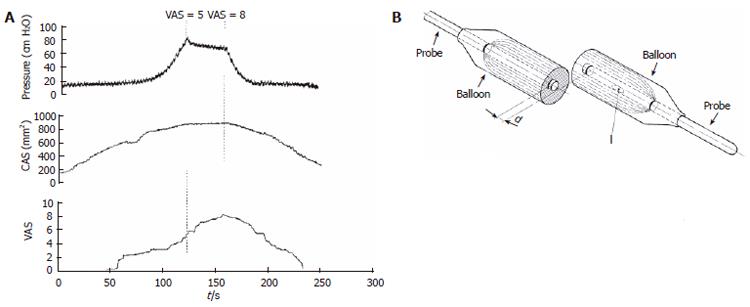Copyright
©2006 Baishideng Publishing Group Co.
World J Gastroenterol. May 14, 2006; 12(18): 2806-2817
Published online May 14, 2006. doi: 10.3748/wjg.v12.i18.2806
Published online May 14, 2006. doi: 10.3748/wjg.v12.i18.2806
Figure 2 Top corner: The impedance planimetric probe for mechanical stimulation of the gastrointestinal tract.
I and d denote infusion side for filling the balloon and the distance between two detection electrodes. Left: Recordings in the small intestine using the impedance planimetric probe with pressure, cross-sectional area (CSA) and VAS response as function of time during a ramp distension of the balloon up to the pain threshold where the bag volume is kept constant. It appears that the pressure decreased, the CSA was constant whereas the pain continued to increase.
- Citation: Drewes AM, Arendt-Nielsen L, Funch-Jensen P, Gregersen H. Experimental human pain models in gastro-esophageal reflux disease and unexplained chest pain. World J Gastroenterol 2006; 12(18): 2806-2817
- URL: https://www.wjgnet.com/1007-9327/full/v12/i18/2806.htm
- DOI: https://dx.doi.org/10.3748/wjg.v12.i18.2806









